
Mobile app testing is the process that involves checking and verifying the functionality and quality of the mobile app. In other words, with mobile app testing, you can ensure that the mobile app meets all the end-users and technical requirements before its release in the market (App Store for iOS devices and Play Store for all Google or Android-based handheld devices). Every developed mobile app for handheld devices undergoes tests to check them for functionality, usability, and stability.
For a long time, mobile device uses are not just limited to communication but have also expanded to perform our daily life activities. Such dependency on mobile devices has increased rapidly due to the development of various mobile apps. These apps can perform multiple activities in our everyday life and help achieve business requirements.
Organizations are now turning to mobile apps as a significant means of expanding their business and reaching out to their audiences. The rapid development of mobile web, hybrid, and native apps has made mobile app testing a vital part of the app development process.
According to Statista - the number of mobile devices is expected to reach 18.22 billion by 2025.

Due to the surge in mobile devices, the demand for mobile apps has grown substantially worldwide. Another survey shows that the global mobile app market is booming, with revenue expected to reach $613 billion by 2025.
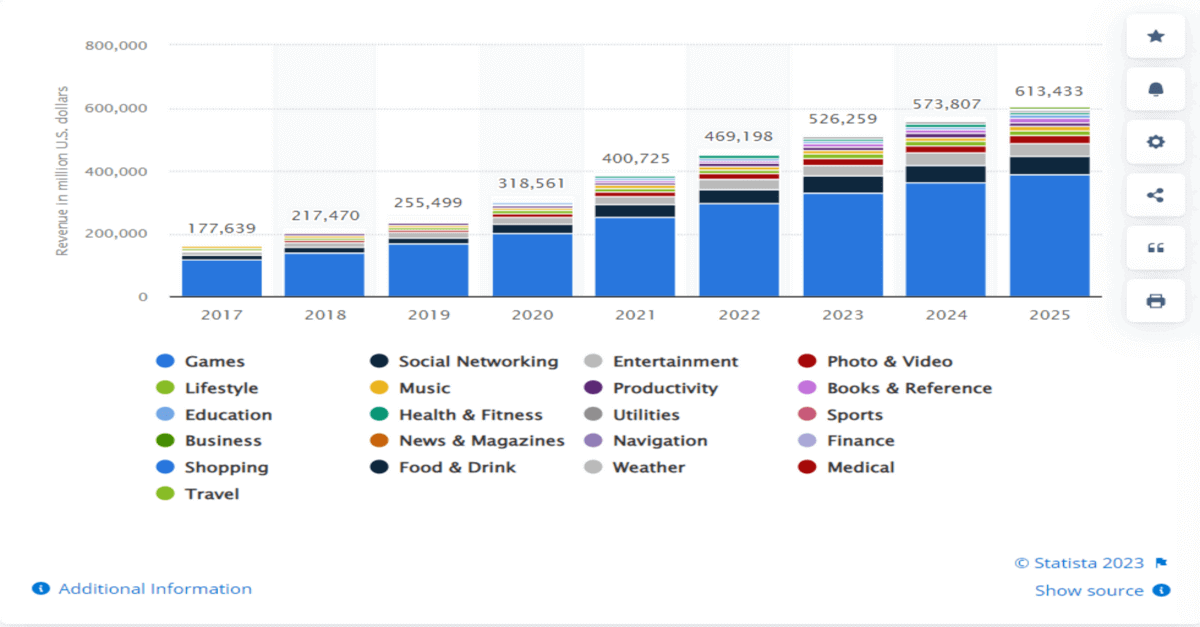
Hence, ensuring that an app delivers a consistent experience across all devices and OS versions is important. This is where mobile app testing helps teams to test apps on multiple devices and operating systems for functionality, usability, and consistency
Mobile application or app testing is the process by which developed mobile apps are tested for their usability, performance, security, and functionality. Performing mobile app testing helps ensure that it aligns with technical and business requirements.
Testing a mobile app often involves looking through its functional and non-functional components. Additionally, it is put to the test by highly qualified professionals for consistency, usability, performance, and compatibility with different platforms and devices. The number of mobile app downloads in 2022 was 255 billion, emphasizing the need to deploy carefully thought-out apps to grab users' attention.
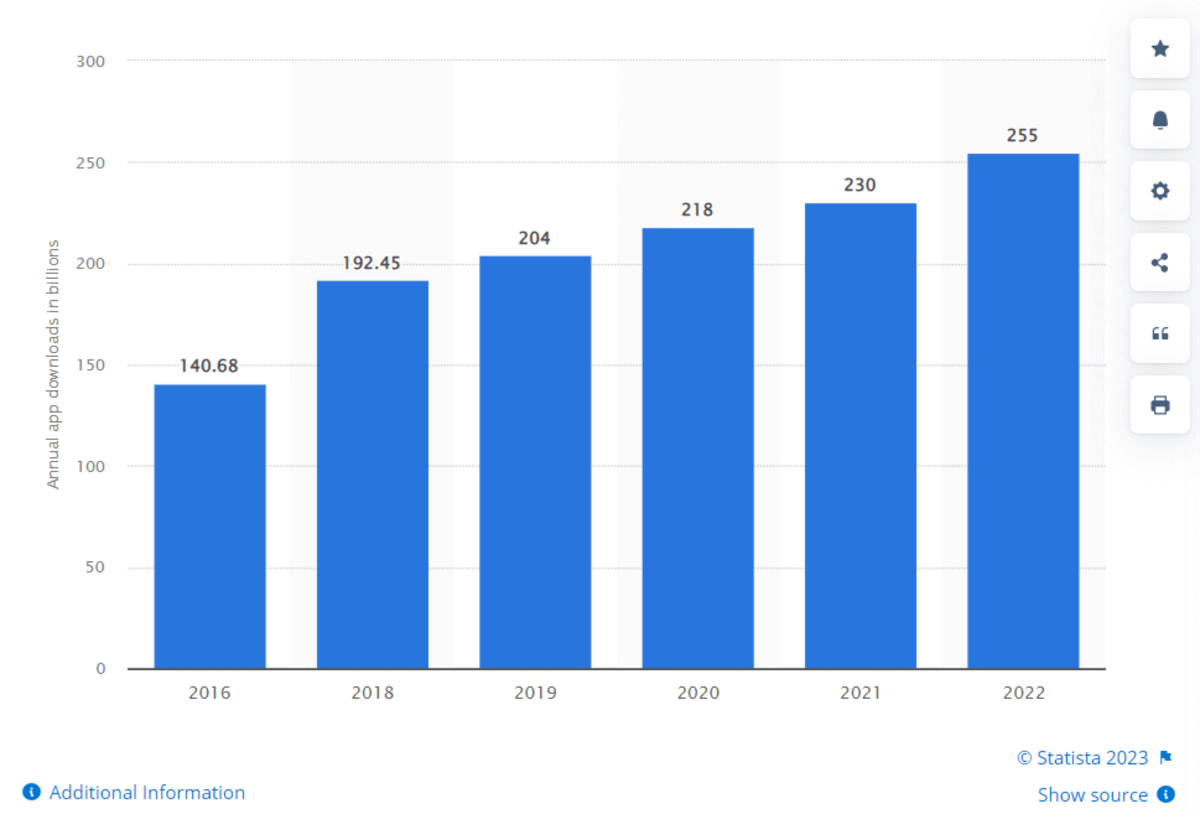
Considering the high demand for mobile apps, it is crucial to ensure their correct functioning before they are released in the market. This is achieved by performing mobile app testing involving functional, security, and performance testing activities.
Through the implementation of various testing approaches, mobile apps are tested across numerous screen resolutions, devices, OS versions, and network bandwidths. Not only this, the compatibility of mobile apps, their security, user experience, and performance are also tested in mobile app testing.
In the development of mobile apps, mobile app testing is a crucial part that identifies the issues and ensures their early fixes. This gives a better user experience, increases user satisfaction, and lowers the risk of negative reviews, loss of revenues, and app abandonment. Hence, businesses and developers need to prioritize mobile app testing to ensure that mobile apps are of high quality and meet user expectations.
In the next section of the mobile app testing tutorial, let’s look at the importance of testing mobile apps.
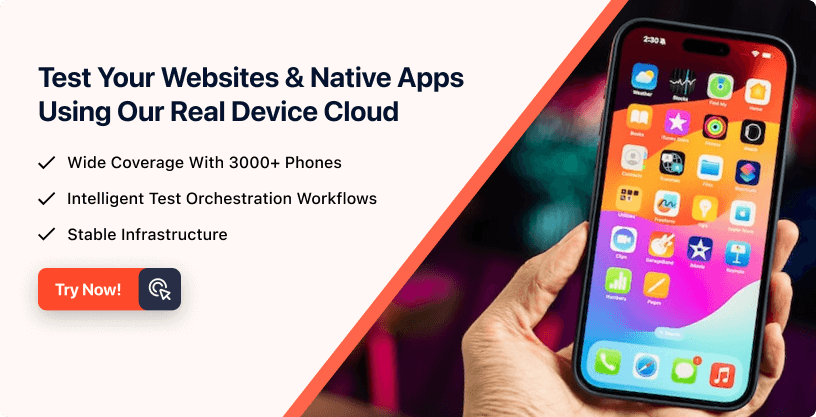
The primary goal of developing mobile apps is to expand the business and reach the maximum number of users worldwide. However, what if developed mobile apps are faulty and difficult to use by the user? There is a high chance that the users will uninstall the mobile apps. This is something any business would not want their end user to uninstall the mobile apps and switch to their competitors. Here, mobile app testing is highly significant as it gives information on the app's functionality.
To ensure that mobile apps meet end-user requirements and goals, adequate and robust mobile app testing is important. However, if the mobile apps are not tested, there is a high probability of a prevalence of bugs or errors that may disrupt the functionality of the apps. This gives a bad user experience; they may delete or uninstall an app. Therefore, mobile app testing is an important process that should not be missed.
When you perform mobile app testing, you can find potential bugs and errors that can impact the functionality and performance of the mobile apps. Those errors and bugs could be fixed at the earliest, giving end-user satisfaction with the mobile apps. Therefore, it is essential that mobile apps are tested entirely before they are released to the end users to ensure that they are reliable, secure, and user-friendly.
In this section of the mobile app testing tutorial, we will discuss different types of mobile applications.
To perform mobile application testing, you first need to understand what mobile apps are and how they differ from websites or web pages.
A mobile app is a software designed to run on mobile devices such as smartphones, tablets, and wearable devices. App shops or mobile marketplaces run by the device's operating system provider, such as Apple's App Store or Google Play Store, are where most mobile apps are downloaded. There are three main types of mobile apps:
You can refer to our earlier mobile app testing tutorial on web vs hybrid vs native apps to learn more about it.
In this mobile app testing tutorial, as we explain mobile app testing, you might think about its similar terms, web app testing. You should know about interrelated terms in software testing, including mobile app testing and web app testing. The difference between the two is based on their purpose, intended users, and complexity. Let us see this in detail in the below-given table.
| Mobile App Testing | Web App Testing |
|---|---|
| Test the mobile apps mainly for devices with smaller resolutions like tablets. | Test the web apps for larger screen resolution. |
| Performing mobile app testing is challenging because of the huge complexity of mobile apps. | Web app testing is comparatively easier. |
| The test is performed on different combinations of device configurations like OS, hardware configurations and resolutions, and others. | Web apps are tested across various browser versions and OS combinations. |
| One of the major dependencies of mobile devices is that it requires power, and drainage of the battery is a major concern. Therefore, a test of mobile apps should be done on fully charged and drained mobile devices. | There is no such dependency on web app testing as it mainly relies on browsers. |
| Testing is done based on the device's interaction with user actions like noise and gestures. This is needed in mobile app testing because different mobiles allow users to interact with diverse applications. | Web browsers have limited options to interact with user actions. Therefore, the scope of testing is less. |
| Currently, mobile apps are accessible to other peripheral devices associated with mobile like pacemakers. Therefore, mobile app testing also needs to be performed on these devices. | Web apps are mainly accessed on browsers. However, other peripheral devices like a webcam and controller are used. But, they are not used on a large scale. |
| Some commonly used tools for mobile apps are Appium, Espresso, XCUITest, etc. | Some widely used tools for web apps are LambdaTest, Selenium, Cypress, and others. |
Test your web and native apps on real devices. Try LambdaTest Now!
Mobile app testing is a crucial part of the development process that the testers perform with utmost adequacy. If you want to get started with mobile app testing, you should know its benefits so you don’t miss this crucial process. Some of the benefits of mobile app testing are mentioned below:
Ensure User Interface (UI)/ User Experience (UX) Usability
App testing allows the testers to test applications according to the end-user perspective. They check the mobile app's usability and user-friendliness by simulating typical users' behavior and testing their look and feel. Testers identify any navigation issues and logical flow and test mobile apps on different devices and screen sizes by performing mobile app testing. This helps to evaluate the UI/UX usability of the mobile app.
Ensure proper functioning
Mobile app testing allows checking mobile app performance and functions without any errors, issues, or glitches. For example, testers can find out whether users can successfully download the app to multiple devices. Or whether the mobile app interacts with supported infrastructure. Hence, you can verify the seamless functioning of the mobile app with mobile app testing.
High end-user loyalty
When you get assured of mobile apps' usability, functioning, and performance, it tends to provide a positive end-user experience. End-users are more likely to use the app and recommend it to their friend leading to a good reputation and high revenues in the software industry.
Identify security vulnerabilities
Mobile app testing is also performed to verify and check any security vulnerabilities in the mobile apps, like data leaks or unauthorized access. Thus, one of the major benefits of app testing is to prevent any potential data breaches and security-related issues.
Lower mobile app development cost
You can easily and early identify errors or bugs in the mobile app during its development process. This further ensures that they are fixed at an early stage and prevents the high cost of fixing bugs later.
In the next section of the mobile app testing tutorial, we will discuss different mobile app testing types.
In mobile app testing, applications must be tested for usability and functionality to give a seamless experience. Testing of mobile apps is not just limited to single-type testing; rather, various types of tests are performed to ensure the complete quality of the mobile app. This ensures that each mobile app aspect, feature, and component are tested.
In this section of the mobile app testing tutorial, we discuss some different types of mobile app tests:
Functional Testing
Functional Testing in mobile app testing determines whether an app functions properly. This type of test verifies that the components are functioning properly, are responsive, faithful to their intended use, adhere to the requirements, and preserve the app's flow.
Some of the different types of functional testing are
Non-Functional Testing
Non-functional testing involves validating the non-functional aspects of mobile applications like performance, reliability, and utility. It also evaluates the system readiness for non-functional parameters that aren't addressed in functional testing.
There are two types of compatibility testing:
It helps verification of following elements of mobile apps:
There are different types of performance testing:
In security testing, you can verify the cookies, protect against attacks, file caching, logins and passwords, and an encryption system.
Different types of security tests can be performed to verify above mentioned aspects in mobile apps. Some of those are as follows:
Apart from the above testing approach, some of the other testing types which should be performed to check the functionality of the mobile app include:
In the next section of the mobile app testing tutorial, we will learn about creating a mobile app testing strategy.
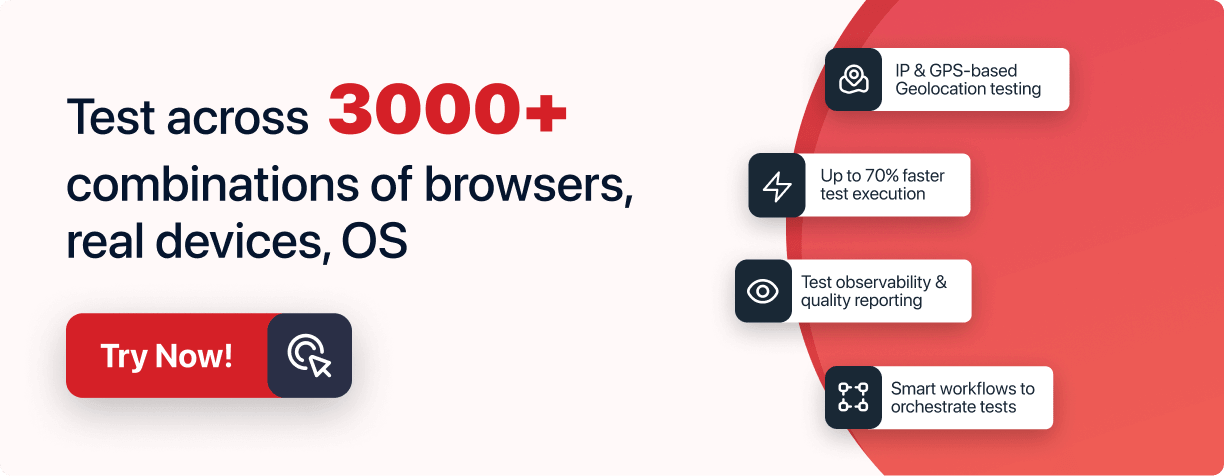
Every app success story has a key ingredient: a pleasant user experience. As a result, most successful apps have a thorough testing process and plan to ensure that the app is delivered with the greatest possible quality. And this quality should be uniform for all users, regardless of device. As a result, you must test your app on all popular devices that your users can use. That is why you will need to create a top-notch strategy for mobile application testing.
In this section of the mobile app testing tutorial, let’s look at some factors you should keep in mind while building an app testing strategy:
Decide your device before you start testing
Achieving comprehensive device compatibility in mobile software testing is an impractical task because it is infeasible to test your app on all existing devices. Therefore it is crucial to review documentation and identify the specific Android versions required for your features to function correctly. This allows you to create a reliable matrix of devices compatible with your application. You can decide on the device with the following steps:
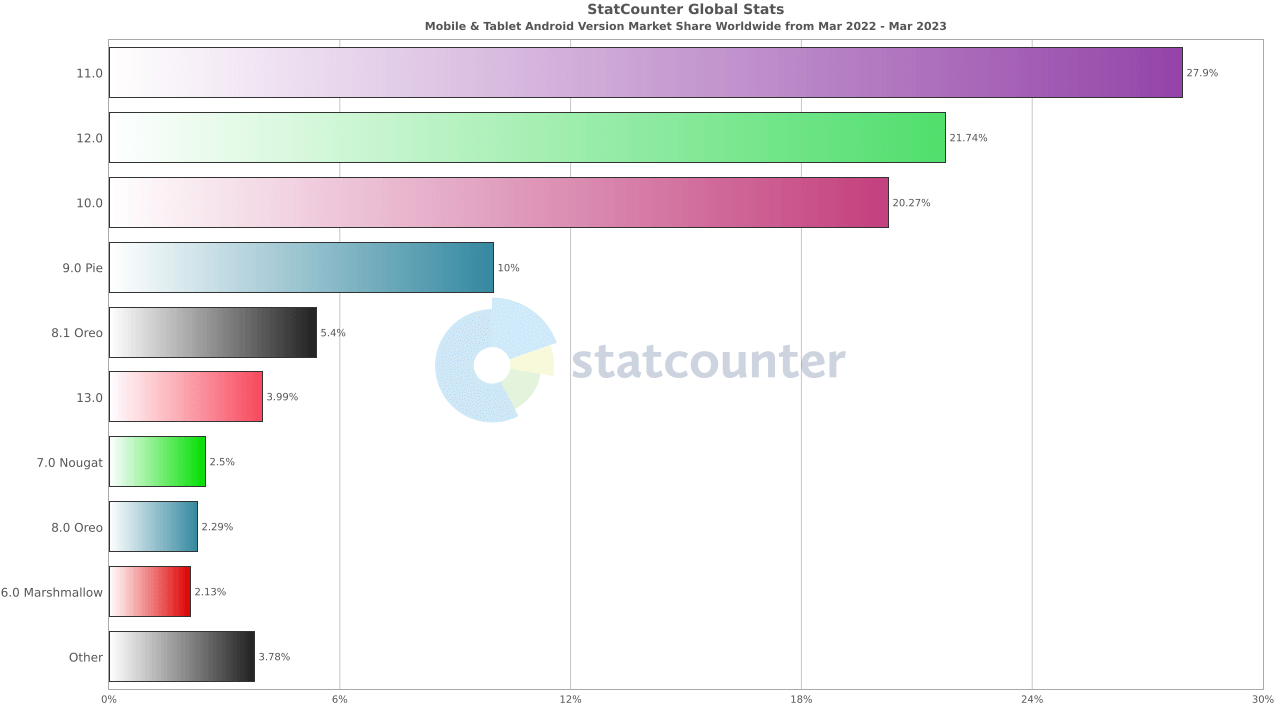
Google Analytics
Google Analytics statistics help you to determine which devices are most likely to access your app. This option is helpful if you already have a website and are transitioning to a mobile app. If available, you can also look at your competitors' analytics.
Having a good grasp of the tools
Tool is the mediator of your test script and mobile apps, so having a thorough understanding of tools will give certainty to the test quality. To understand which tools will be suitable for your project, you can follow the below strategy:
Prioritize Documentation
Documentation is an essential step in enhancing your testing strategy and other areas of software development. The same is true for testing mobile apps. While documentation is not a key component of "testing" or "coding," it is as vital as developing a mobile app testing plan.
Here are some relevant important document projects for mobile application testing:
Cross-platform testing
The same tests may be performed on Android and iOS applications using cross-platform mobile app testing tools and frameworks. It is an excellent strategy because of the time it saves.
With single test scripts in place, you can edit the tests in a single location and concentrate on developing new test scripts rather than writing duplicates. Using such frameworks will also assist you in decreasing future work.
Define the scope of automation testing
To reduce time and minimize repetitive work, automated testing is implemented into the Software Development Life Cycle. But, to achieve these objectives, we must first decide what we will leave to the system and what we will manage ourselves. To put it another way, how should we separate our automation tests to maximize productivity while testing a mobile app?
Deciding how to separate automation testing is usually dependent on the project. Each project has its uniqueness and demands. Hence, before you begin, carefully divide your tests into different portions, as these may continue as your mobile app goes through consecutive updates.
That was a brief summary of the strategy. However, you can learn in detail each step in our dedicated mobile app testing tutorial on strategizing mobile app testing.
The method used to execute the tests is an integral part of developing a solid testing regime. As a result, when performed on different devices, the demanding testing procedures can produce varied findings.
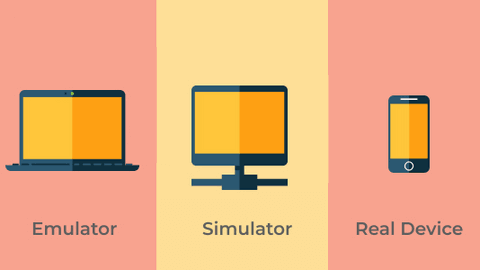
In this section of the mobile app testing tutorial, let's take a closer look at the difference between emulator, simulator, and real device for mobile app testing to gain a better understanding.
Emulator-based app testing
A mobile app emulator is a virtual platform that duplicates an Android handset on your computer, making mobile software testing easier. As a result, you can test Android apk files without a physical device by using an online APK emulator.
Simulator-based app testing
A simulator is a virtual platform that emulates the iOS operating system and executes the program on the specified Apple device (e.g., iPhone app emulator) by taking over the computer's operating system without the requirement for a physical device. Utilizing a simulator helps you to execute iOS app testing quickly.
Real device-based app testing
It is critical to test a website on various devices to ensure that it is compatible with multiple screen sizes, resolutions, operating systems, and browsers. Testing on real devices allows testers to find issues that may otherwise go undetected when testing on emulators or virtual computers
| Feature | Real Device | Emulator/Simulator |
|---|---|---|
| Accuracy | As it tests on real hardware and software, it produces the most accurate results. | Mimics the behavior of the gadget, it may not deliver accurate results. |
| Performance | It correctly tests performance since it uses actual hardware and software. | Performance is relatively low compared to real devices. |
| Cost | It is usually the most expensive option because it necessitates the purchase of physical devices. | Because they use programs that emulate or simulate devices, it is free or low-cost. |
| Set up | Setup of the real device is required, and manual testing may be required. | Easy to set up |
| Availability | It has limited availability | Emulators and Simulators for the majority of popular devices that are widely available. |
In the next section of the mobile app testing tutorial, we will discuss different approaches to mobile app testing.
Knowing the correct strategy to perform mobile app testing, you may think about the different techniques that can be leveraged to execute tests. Mobile app testing can be achieved by two different approaches: manual testing and automation testing.
However, both approaches exist with advantages and disadvantages. Hence, a combination of both approaches is used to perform mobile application testing.
In this section of the mobile app testing tutorial, let us learn about these approaches specifically.
As the name suggests, manual testing is a test approach executed manually without any automated procedure. It is dependent on human input in testing the features and functionality for quality assurance. Here, the manual testers manually execute the test case, record the result, and identify any potential bugs.
In manual app testing, testers test the application from the user’s perception and check its usability and performance. Even though manual testing is an error-prone approach, it should be ignored because it simulates real-world scenarios that automated testing cannot replicate.
When should you prefer manual testing?
In automation testing, test tools are used to execute the test cases with little human intervention. You can run as many test plans for a mobile app, which increases the test coverage. However, you should consider only automating test cases that are easily executable, have expected results, and are impossible to do manually.
When should you prefer automation testing?
This section of the mobile app testing tutorial discusses frameworks used for mobile application testing.
Various mobile app testing frameworks have different functionality, making it difficult for the app tester to choose the right one for the situation. In this mobile app testing tutorial, we have three main divisions of mobile testing frameworks, as mentioned below:
Here is a list of some best Android testing frameworks for mobile testing, such as
Below are the app testing frameworks for iOS mobile applications.
Cross-platform testing frameworks mean you can test Android and iOS on these platforms.
Feel free to look at our mobile app testing tutorial, where we have discussed all ins and outs of some best mobile app testing frameworks.
The first step for mobile automated testing is to find a suitable app testing tool for developing test scripts. After you've decided on a tool, you may begin configuring the test environments.
Here is the checklist you can refer to while choosing the right tool for mobile software testing:
In this section of the mobile app testing tutorial, we have covered some of the best app testing tools.
In the next section of the mobile app testing tutorial, we will learn more about different parameters for mobile app testing.
It’s important to keep the parameters in mind while choosing between the virtual device or real device cloud.
User interface
The user interface does not require any hardware to be evaluated. If you have an application that can run on low-level specifications and the only thing it cares about is how well it looks, a virtual testing platform is an ideal option for you, and you should utilize it.
Network condition
Virtual testing platforms have begun to provide network throttle settings to help you lose or tighten the bandwidth quantity for testing. Nevertheless, none of these alternatives are sufficient for testing your application's performance in real-world scenarios.
When we talk about bandwidth, we don't only mean reception but also hardware difficulties and latency in network reception caused by other factors. Real device testing with network options is the best option for this.
The sensor problem is too delicate to be left to the emulators. They certainly support these sensors and should be utilized in the early phases of testing. However, once development and early testing are complete, it is critical to test on a real device to ensure that the application reacts precisely to each sensor data. This is not something that should be left to chance or emulators.
Performance
Aside from network circumstances, load time and threshold can be adjusted in virtual testing. In general, virtual and real device testing load time should not exceed one second. But, you may need network conditions data and offline application operating data to compile a complete performance report. Both of these may eventually necessitate real-world device testing.
Even if you wish to use real devices, you may have to refrain because they are far more expensive than emulators. Many virtual testing platforms, such as Android Studio and other open-source ones, are even free to use. Nevertheless, they lack the functionality required of a tester and instead focus on simple app rendering.
Maintenance
Virtual testing platforms are rather simple to keep up with. You only need to access the platform from the cloud or download it to your system. On the other hand, if you want to test on a genuine device, you must first purchase that new device. Furthermore, the real device has considerable operational and maintenance costs.
CPU usage and battery
The two categories, battery and CPU utilization, are even related, as more CPU usage generates more heat and consumes more power. Because there are hundreds of processes running in a real device, this is the only method to get a realistic picture of CPU usage. Don't forget to look at the RAM and GPU use numbers as well.
View App Profiling for your Appium tests. Try LambdaTest Now!
Beta testing is a technique of application testing in which people from outside the organization test the product and provide feedback. Beta testers install an application, use it as if they were a regular user, and provide their comments. Furthermore, enterprises benefit from the real-time performance data obtained throughout the mobile app beta testing period.
Beta testing is frequently performed after alpha testing. The developers and testers participating in the application development perform alpha testing, often known as the first step of user acceptability testing. The procedure is similar to that of beta testing a mobile app. Once the developers and testers are satisfied, the product is released for real-world testing, also known as mobile app beta testing.
In this section of the mobile app testing tutorial, we have covered some of the benefits of mobile app beta testing:
There are two types of mobile beta app testing:
In the next section of the mobile app testing tutorial, we will see the steps to follow while performing mobile beta app testing.
Mobile app beta testing is a relatively straightforward procedure. There are just two groups of individuals involved: developers and testers. Here are the steps to follow beta testing:
Every mobile app you've downloaded on your phone, regardless of genre, is designed to provide seamless and quick navigation. Having a limited attention span, app users are constantly on the lookout for something new that can provide them with value. At the same time, they always want a great app experience. As a result, quality is the foundation of any high-quality mobile app.
As a developer, you should ensure that your software fits the most important criteria before releasing it. Refer to the below given mobile app testing checklist to ensure that you have considered all crucial aspects of the mobile app.
Please check our mobile app testing tutorial on the mobile apps testing checklist that will assist you and your team in identifying and resolving issues before the final product's release.
To perform accurate and robust testing of mobile applications, it is important to perform end-to-end testing. It ensures the seamless functioning of mobile apps.
This section of the mobile app testing tutorial discusses the steps to perform mobile application testing:
Step 1: Create test plan
Firstly, you should prepare a clear outline of the test to be executed for mobile apps. Try to include all the test plans and utilize cases in the list. Following this, decide on the test briefly that you want to perform with the expected outcome for the sprint.
Step 2: Choosing test type
Now you have a test plan, and you have to choose the type of mobile testing approach you intend to perform. For example, whether you want to test the mobile app manually or automate it. However, choosing the testing type, you have to focus on certain factors. For example, in this section of the mobile app testing tutorial, we have covered a few cases where you should perform automation testing:
You should remember that testing small components of mobile apps is more efficient and manageable when automated. However, always prefer performing manual testing when you have to test the system repeatedly.
Step 3: Preparing test cases
When you have decided on the type of mobile testing, you now have to create test cases to execute the test. In this step of the mobile app testing tutorial, you must select the appropriate approach, like requirement-based testing and business scenario-based testing.
The type of test cases you define depends on the test you will perform. To this, there are two broad categories of testing that mobile apps undergo, which include:
Step 4: Manual testing
When you choose an Agile testing framework, it is always advised to use both manual and automation testing approaches to perform effective testing. However, when you start to test mobile apps, the testing sprint should always begin with exploratory testing.
Since it does not require any initial investment, it is always preferred at the first stage. To maintain a record of the test, you should keep logs of the entire testing session in an Excel or Word document.
Manual testing can be done in two different ways:
Step 5: Automated testing
Testing is an exhaustive process and requires verifying each functionality of the mobile app, depending just on manual testing can be time-consuming. Therefore, for the regular and expected tests, it is recommended to automate the test.
Automation testing saves time and human effort. Further, testers mainly perform automation testing for load testing, performance testing, spike testing, and stress testing. You should be particular in choosing the right automation tools as per your test requirement (discussed in the above section of the mobile app testing tutorial).
Step 6: Usability & Beta testing
Usability and beta testing are crucial parts of mobile app tests in unmasking hidden and critical errors before their release in the market. You can initiate usability testing during the design phase to get feedback from real users. It allows developers to exhibit potential features and reduce the list of those users have received perfectly.
Beta testing is conducted when the mobile app is ready, and developers are all set to welcome feedback before releasing it.
Step 7: Performance testing
Performance testing helps determine the mobile app's complete function. Now that you have tested specific features of your application, you are required to test the whole application’s performance. You can quickly identify the scalability, speed, and stability of the mobile app in case there is high traffic from end users. It also checks the mobile app for any system error.
Step 8: Security testing
Before releasing the mobile app in the market, you need to test the security of the mobile app. You must perform security testing and ensure it follows various data security guidelines, such as HIPAA, PCI DSS, and FFIEC. You will be able to analyze the risk associated with viruses, application hackers, and unauthorized access to sensitive data.
Step 9: End-to-End testing
On completion of all intended tests of the mobile apps, developers should finally execute an end-to-end test sprint. It is done to ensure the working of the mobile app as per expectation on the server level and back end. This will give assurance that the mobile app is ready to be uploaded.
In case any issues are found in the mobile app, you can quickly fix them by repeating end-to-end testing. However, if no major bug is found, the mobile app is released to the App stores.
In the next section of this mobile app testing tutorial, we will analyze two different methods to perform mobile app testing - on real and virtual devices.
To perform accurate and robust testing of mobile apps, it is important to perform end-to-end testing. It ensures the seamless functioning of mobile apps.
When it comes to testing mobile apps, you get two options: test on real devices or virtual devices (emulators and simulators). Most organizations prefer to test on real devices so that mobile apps have seamless functions. However, most QA analysts are often confused about whether to use real or virtual devices to test a mobile app. Let us clarify this in this section of the mobile app testing tutorial.
Testing on real devices
When you intend to test the mobile app's performance, you should choose to test it on a real device. They give accurate results on the working of the mobile app as testing is done on the same conditions as the end users. In this section of the mobile app testing tutorial, we have mentioned a few benefits of testing on real devices, which include:
Thus, testing on physical devices is essential for ensuring the app performs well in real-world scenarios.
Testing on virtual devices
Use of virtual devices to test mobile apps is also preferred as it mitigates the situation of having multiple physical devices. You get most of the features of real devices on virtual devices, which allows mobile app testing.
You can choose to test on an emulator when you test the mobile’s external behavior. On the other hand, simulators are less effective than emulators and are unable to debug the issue found in mobile apps.
However, it is essential to note that simulators do not provide an accurate representation of a real device's performance and behavior, so it is recommended to use them in conjunction with real devices. It’s preferred to select a cloud-based platform that offers real device cloud to test mobile apps. It provides a range of Android and iOS devices that simulate app behavior in real-user scenarios, eliminating the need for an in-house library.
In the next section of the mobile app testing tutorial, we will learn about performing mobile app testing on the cloud.

Mobile app testing on the cloud has been the most preferred approach for a long time by the QA analyst. You can leverage the true capability of mobile app testing on cloud-based platforms as it provides testers and developers with access to multiple OS, devices, and tools. You can quickly test mobile apps across multiple environments.
Real device testing in the cloud allows end-users to access real devices (Android and iOS devices) directly from the desktop browser. You don’t have to get multiple physical devices to test the functionality and compatibility of mobile apps. This will save you cost and time in testing mobile apps and ensure wide device coverage.
In the cloud, the most significant advantage it offers is the ability to test across multiple devices and OS simultaneously. This ensures the seamless working of mobile apps across all platforms. You can leverage mobile app testing by performing testing in cloud-based digital experience testing platforms like LambdaTest.
Let us learn this in more detail in the below section of the mobile app testing tutorial.
We have already discussed different methods, frameworks, and strategies for mobile app testing in the earlier section of the mobile app testing tutorial. However, if you want 100% hassle-free mobile app testing, you must consider LambdaTest.
LambdaTest is a digital experience testing that lets you test on both real and virtual devices. This gives access to a diverse collection of iOS and Android devices with different OS, screen sizes, etc. This allows a more efficient real-device testing process in cloud infrastructure and delivers high-quality mobile apps.
You can perform both manual and automated mobile app testing on LambdaTest.
In the next section of the mobile app testing tutorial, we will learn how to perform mobile app testing on the LambdaTest platform
LambdaTest offers manual testing (real-time testing) of mobile apps on real devices and virtual devices (emulators and simulators). Below are the given steps to perform mobile app testing.
Real Time App Testing on Emulators and Simulators
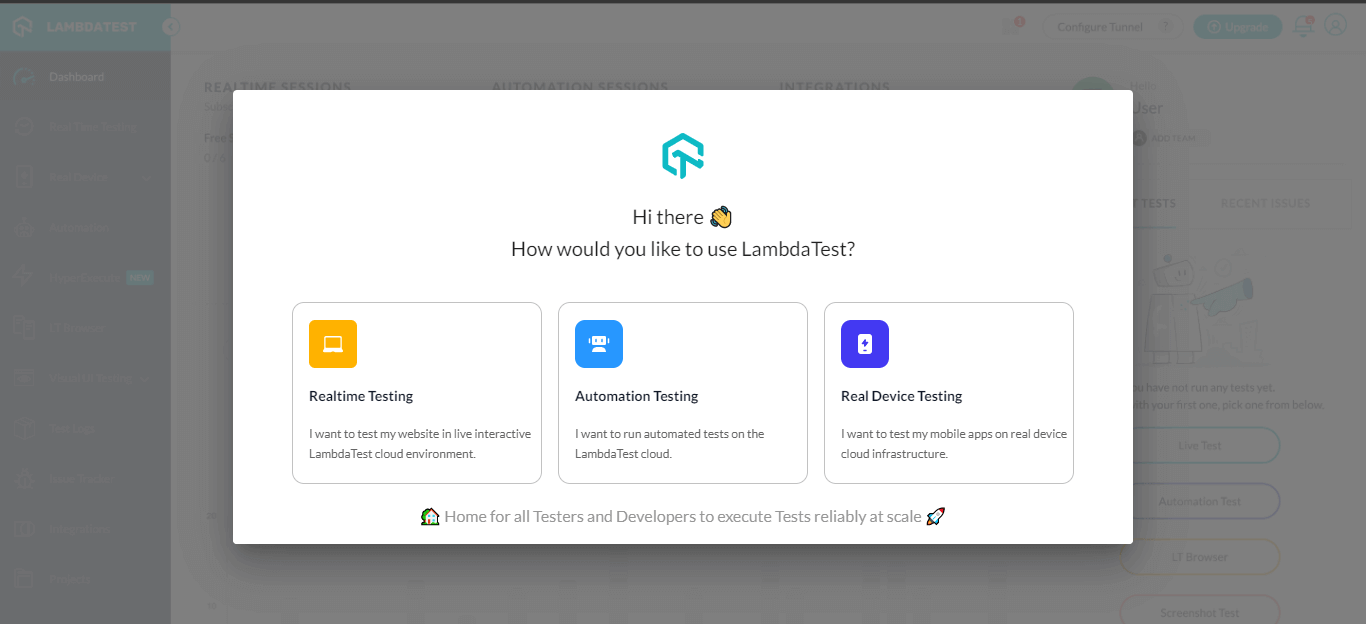
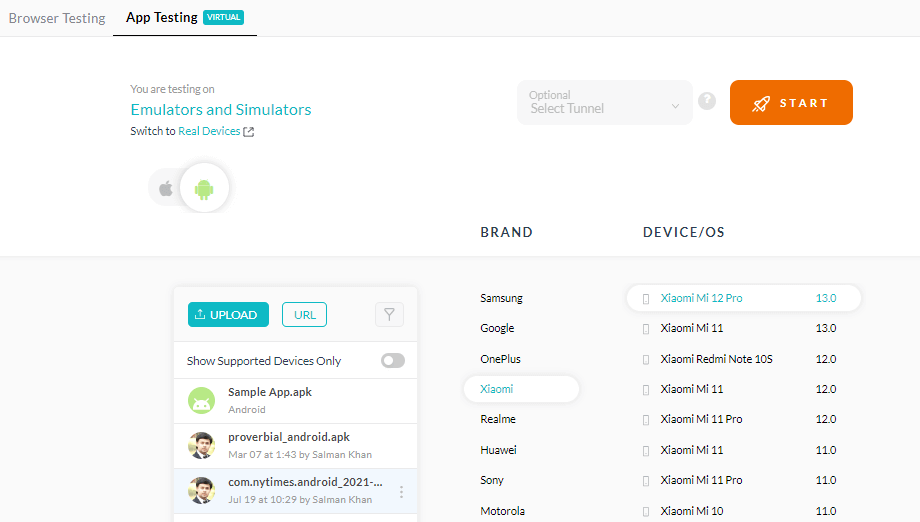
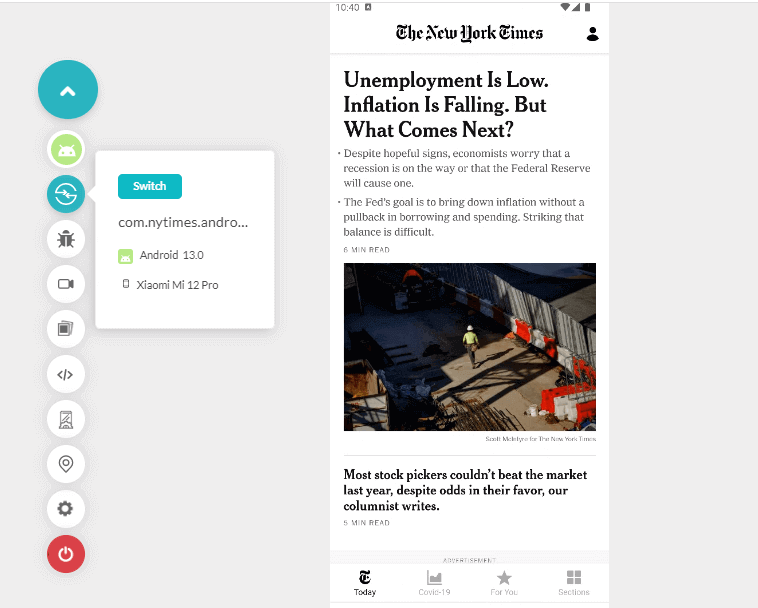
Real Time App Testing on Real Devices
Similarly, you can also test a mobile app on real devices as LambdaTest offers a real device cloud, which allows Real-Time App Testing on various real device environments. You can follow below mentioned steps to execute it.
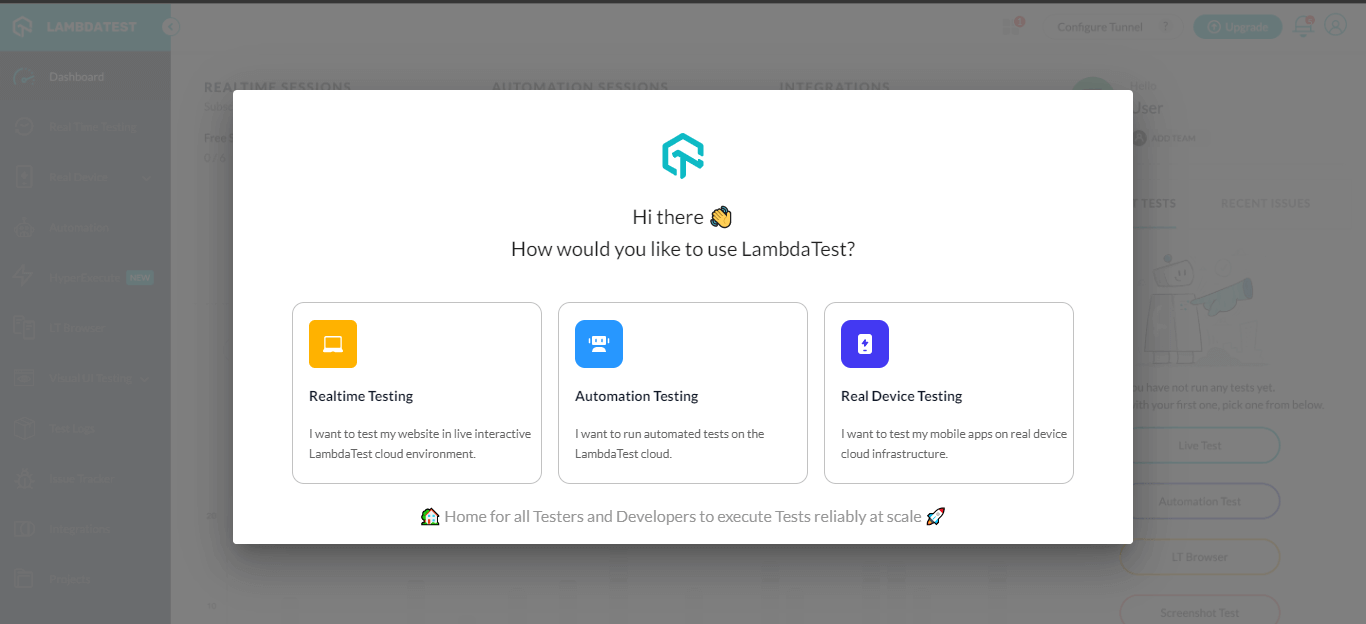
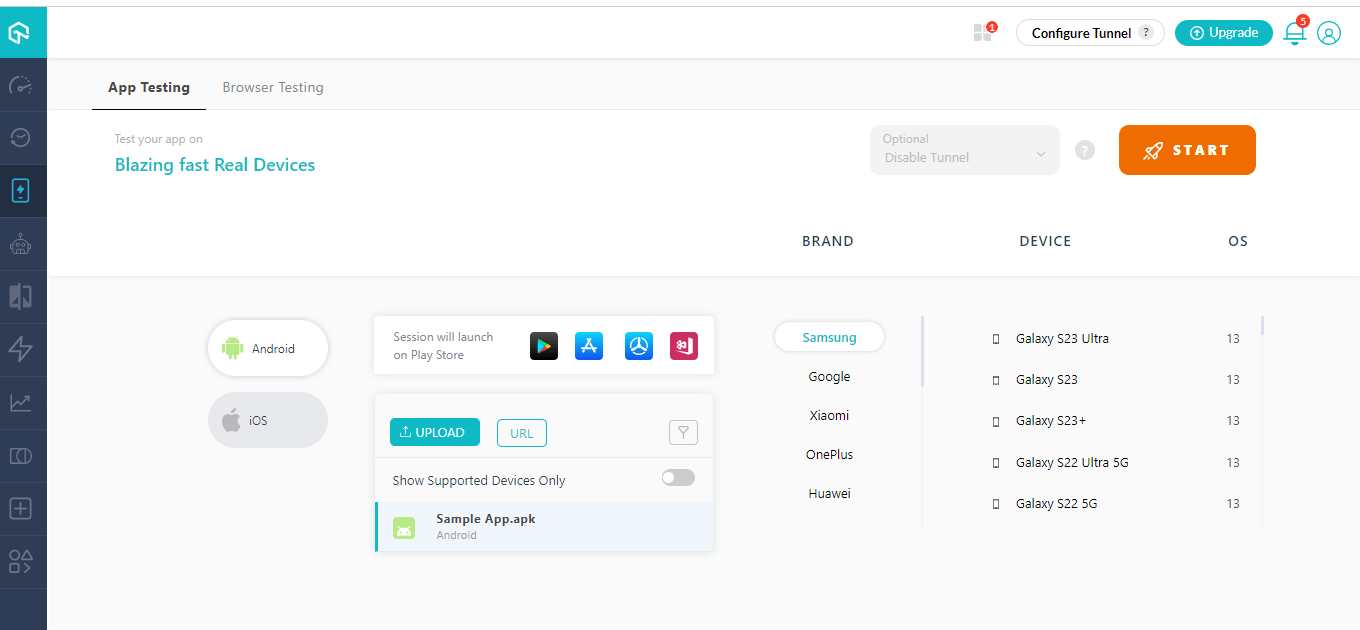
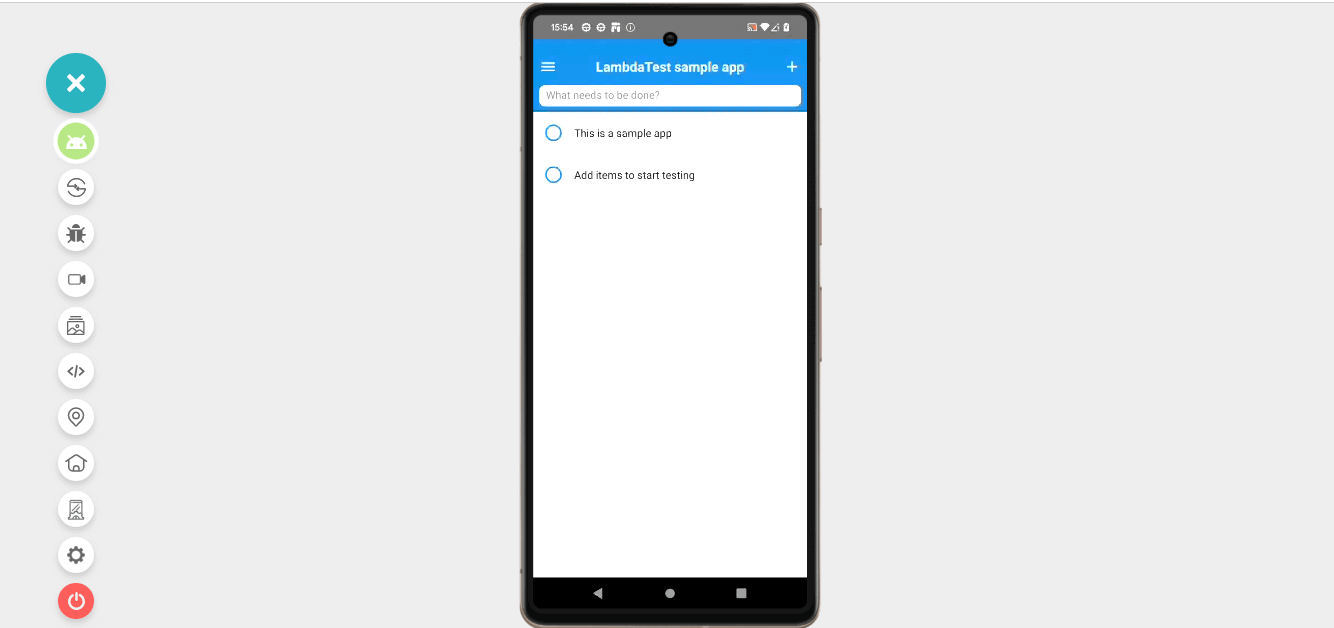
LambdaTest lets you perform app test automation on a real device cloud using Appium, Espresso, and XCUITest. You can also perform automation testing on mobile browsers using the Appium framework.
Here are the simple steps to follow to automate mobile app testing.
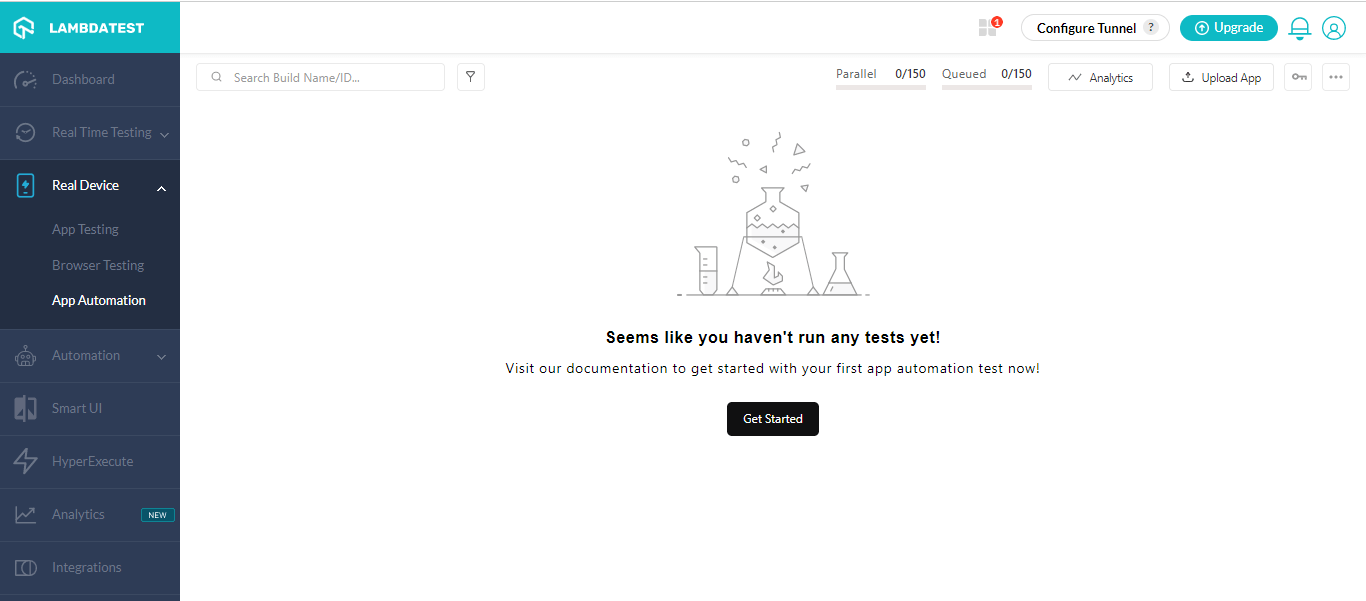
Refer to our documentation to get started with app automation with Appium, Espresso, and XCUITest:
In case you wish to perform mobile browser automation on the real device, check out the documentation - mobile web automation on real devices.
Subscribe to our LambdaTest YouTube Channel to get the latest updates on tutorials around Selenium testing, Cypress testing, Appium, and more.
In the next section of the mobile app testing tutorial, we will discuss some of the challenges of mobile app testing
Mobile app testing is not an easy task. Testing apps on all platforms takes a significant amount of time and work.
This section of the mobile app testing tutorial focuses on the challenges that testers might face during mobile app testing.
If you are looking for a list of all possible challenges and solutions for those, you can go through our earlier mobile app testing tutorial on mobile app testing challenges.
In the next section of the mobile app testing tutorial, we will learn some of the best practices for mobile app testing.
Now, you have learned how to perform mobile app testing and its underlying challenges in the mobile app testing tutorial. It is important to optimize your mobile app testing process and address any challenges to avoid missing the testing of important components of the mobile app.
In this section of the mobile app testing tutorial, we look at some best practices you should incorporate while performing mobile app testing.
Mobile has become an essential component of everyone’s day-to-day life. The more it grows, the more its different usages come to the surface. People use it for entertainment or to purchase all different kinds of purposes. As per the source, a user spends more than 200 minutes each day on their mobile device; what is the greatest option for a business to expand and be visible at all times? But, because everyone is aware of it, everyone develops it.
This situation makes it a highly competitive environment where you cannot have the tiniest error in your application. It makes mobile application testing crucial. We hope in this mobile app testing tutorial, you learned A to Z about mobile app testing, how to perform it, and how LambdaTest can be your best option for that purpose.
Nazneen Ahmad is an experienced technical writer with over five years of experience in the software development and testing field. As a freelancer, she has worked on various projects to create technical documentation, user manuals, training materials, and other SEO-optimized content in various domains, including IT, healthcare, finance, and education. You can also follow her on Twitter.